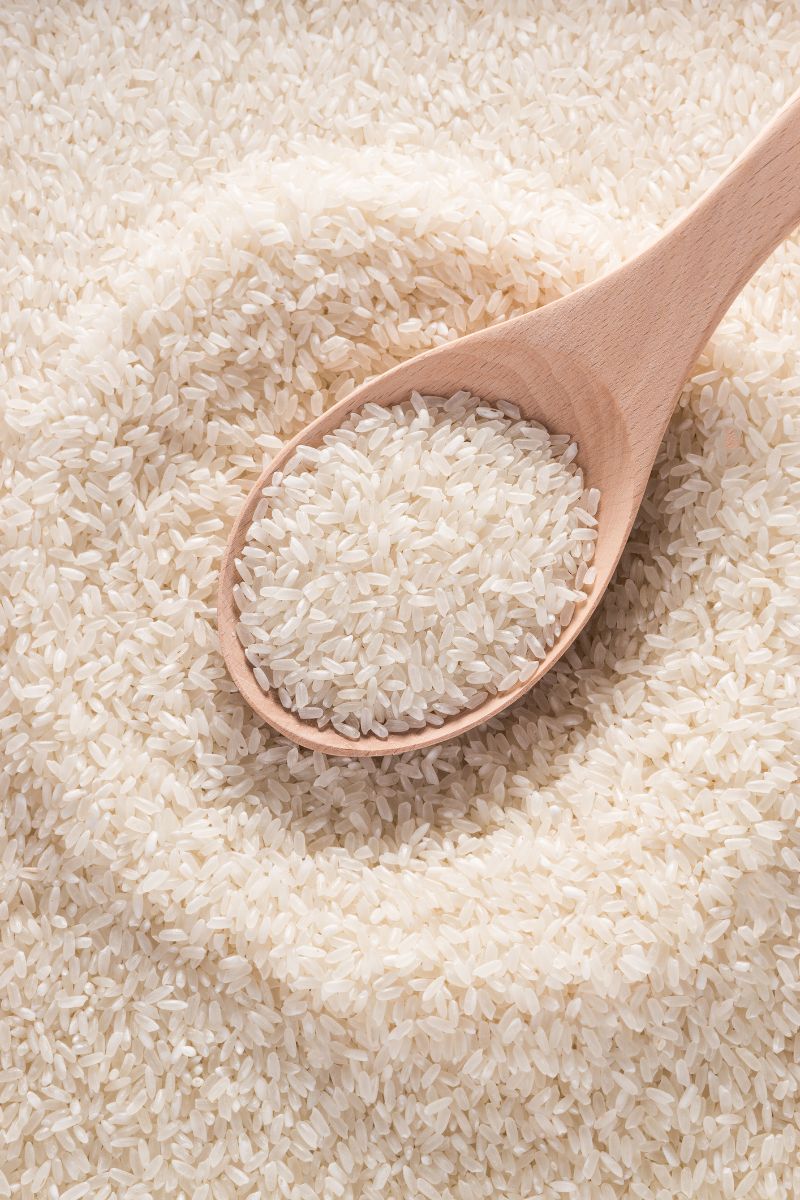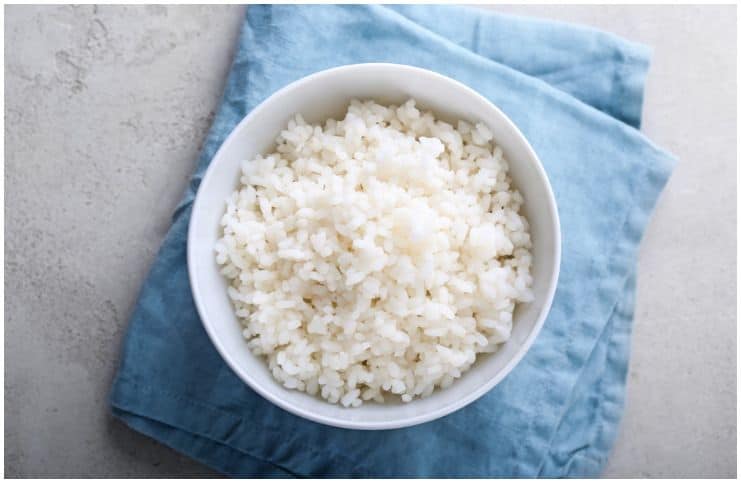Yellow Rice vs White Rice: comparison
Yellow Rice
It is compositionally the same as the white version, except for the fact that the yellow one is enhanced with turmeric, a plant related to ginger that has strong anti-inflammatory properties and has an essential role in reducing and preventing type 2 diabetes mellitus, heart disease, arthritis, cancer, or Alzheimer’s disease.
In addition, the more expensive of this type of rice is colored with saffron, a spice derived from the flower of Crocus sativus, which has a dark orange carotene called crocin.
Nutrition Facts
It is an excellent source of dietary fiber (5%DV/100g), vitamin C (9%DV/100g), iron (45%DV/100g), sodium (88%DV/100g), protein (7.1 g/100g). Also, it is fat-free and has about 357/100g calories. The data is from cronometer – Vigo Yellow Rice).
Health Benefits

Heart Health
Vitamin C helps maintain healthy collagen in the skin, promote healthy bones and teeth, repair damaged tissue, and enhance the immune system.
Women who consume the most foods rich in vitamin C are 30% less likely to suffer a heart attack than those who consumed the least, according to the Nurses’ Health Study at Harvard University.
Additionally, patients with type 2 diabetes can benefit from extra vitamin C in their diet since this important nutrient can help regulate glycemia levels.
Prevents Iron Deficiency Anemia
Iron is a crucial mineral for human health.
For example, iron regulates cell growth and is a structural component of numerous enzymes and proteins.
Iron deficiency anemia is the leading nutritional deficiency worldwide and in the United States, which can be prevented by consuming this type of rice regularly.
Weight Loss
Dietary fiber helps relieve and prevent constipation as well as it can keep you from developing hemorrhoids. Also, dietary fiber helps the human body better absorb the minerals and vitamins from food.
Moreover, the fiber found in this rice binds with fats in the colon, which translates into lower LDL and total cholesterol levels. Foods high in fiber also have been shown to reduce appetite, and increase satiety, which ultimately leads to a healthy weight loss.
READ MORE: Swiss Chard vs Rhubarb
Side Effects
There are no side effects, except it has too much sodium – 88%DV/100g.
The body only needs a little of this mineral every day to regulate muscle and nerve functions and to balance fluid levels.
However, a regular diet high in table salt (sodium is about 40 percent of table salt) can lead to a reduced function of the endothelium, the inner lining of blood vessels.
More importantly, sodium has been strongly associated with an increased risk of kidney disease, stomach cancer, and some intestinal disorders.
Furthermore, a high-salt diet may cause liver damage and an increased risk of multiple sclerosis, according to a study issued in the Journal of Agricultural and Food Chemistry.
READ MORE: Papaya vs Mango – Nutrition Facts
White Rice

It is a staple food for more than fifty percent of the world’s population, especially for people living in eastern and southern Asia.
Nutrition Facts
It is a good source of protein (5%), thiamin (11%), niacin (9%), folate (14%), panthothenic acid (4%), iron (8%), manganese (19%), selenium (11%), zinc (3%), phosporus (4%), and dietary fiber (1%).
Note – some nutrients are removed during the processing of this type of rice, like thiamine (still, 11% of the recommended daily intake remains). Due to this depletion of important nutrients, in the United States, it is commonly enriched with niacin, thiamine, and iron.
READ MORE: Clementines vs Oranges – Health Benefits
Health Benefits
Before and During Pregnancy
Folate is an important B vitamin for the health of the mother and the unborn baby because it has been found to lower the risk of certain birth defects considerably, including neural tube defects.
Improves Vision
Thiamine, also known as vitamin B1, is a coenzyme used by the human body to maintain proper nerve and heart function and to metabolize food for energy. Also, essential fatty acids Omega-6 and 3 work together with thiamine to prevent the formation of cataracts.
Bone Health
Manganese is an important trace mineral that is required by the human body in small amounts.
Manganese, in combination with zinc, calcium, and copper, can help lower bone loss, particularly in seniors, who are more susceptible to weak bones and bone fractures. Manganese also activates a variety of enzymes which have an essential role in metabolism.
Signs and symptoms of a deficiency of this essential mineral include – altered fat and carbohydrate metabolism, impaired glucose (sugar) tolerance, bone malformation and demineralization, skeletal abnormalities, skin rash, stunted growth, and elevated blood phosphorus, calcium (may lead to hardening of the arteries), and alkaline phosphatase levels.
Good For People With Hypertension
Hypertension is a more frequent disorder in which the long-term force of the blood against the artery walls is high enough that it may ultimately cause heart disease.
This rice is very low in sodium (close to none); therefore, it is considered one of the best foods for people suffering from hypertension.
READ MORE: Pomelo vs Grapefruit – Side Effects
Side Effects
According to research, some brands of rice contain a substantial amount of arsenic. Chronic exposure to inorganic arsenic has been associated with an excess incidence of stillbirths, miscarriages, preterm births, and babies with low birth weights.
The lowest levels of arsenic were found in brands of rice imported from Asian countries or from lands with no poultry farming.
Bottom Line – Yellow Rice vs White Rice – Which Is Better For Your Health?
Both types of rice have their own distinct flavor and texture, but which one is better for your health?
To answer this question, it is important to consider the nutritional content of both white and yellow rice.
White rice is a good source of carbohydrates, but it is also low in fiber and other nutrients.
In contrast, yellow rice is a rich source of vitamins, minerals, and antioxidants. It also has a higher fiber content, which helps to regulate digestion and prevent constipation. So, when it comes to nutrition, yellow rice is the clear winner.
Images Credit – Shutterstock & @Getty
READ THIS NEXT: Red Rice: Side Effects
